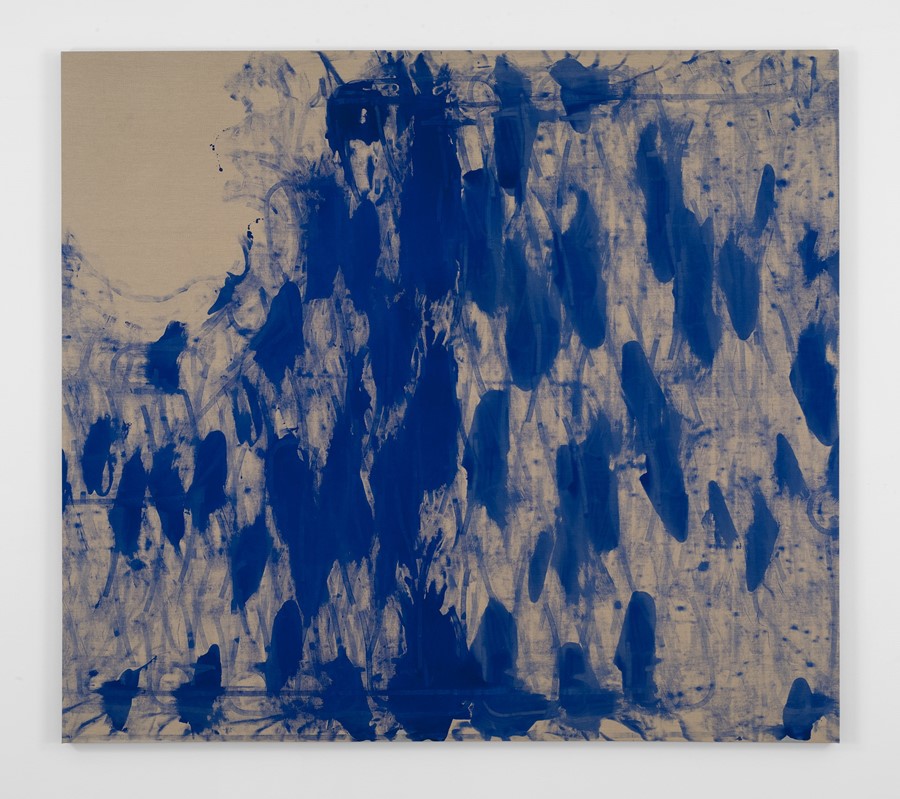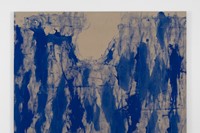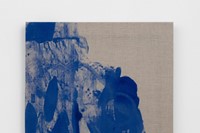Meet the female artist enlisting the help of a robotic vacuum cleaner to subvert Yves Klein’s famed Anthropometries series
Artist Addie Wagenknecht is no stranger to enlisting the help of machines to create art. In the past, she’s used a small drone as a paintbrush and incorporated a robotic arm that reacts when a baby cries into an interactive sculpture. For a new series of artworks, Wagenknecht utilises her body in conversation with a Roomba – a robotic vacuum cleaner – to create evocative abstract paintings in International Klein Blue.
Titled Alone Together, the series of self-portraits is a reference and response to Yves Klein’s Anthropometries paintings from the 1960s, in which he employed nude women as ‘living brushes’ and directed them to press their paint-covered bodies to create marks and impressions on the canvas. “I wanted to renegotiate Klein’s gesture, not only from a female perspective but by using a common household device to visualise the labour,” says Wagenknecht.
To create the pieces, the artist reversed the polarity of the Roomba’s dust containers so they would act as paint distribution vessels, and modified its algorithms to control the amount of paint and kinds of strokes it made. As she sat naked on the canvas, the robot would move around her body leaving blue smears and imprints. “I wanted to transfer the labour of creation to a device typically used to replace female labour,” she explains. “In a society that readily embraces Artificial Intelligence, the conundrum is how much control we’re willing to give up in exchange for the promise of a more optimised life. So AI, much like traditional painting, is about control – these works are about a loss of control.” The outcome is a striking series of self-portraits with abstract geometric forms that draws the eyes to a visible void where the artist’s body was positioned. Even though Wagenknecht relinquishes painterly control to an autonomous robotic vacuum cleaner, there is a sweeping sense of harmony in the compositions.
As Alone Together opens at New York’s bitforms gallery, we spoke to her about making art alongside machines, the significance of acknowledging the female form through negative space and her longterm preoccupation with gendered labour, power structures and technology.
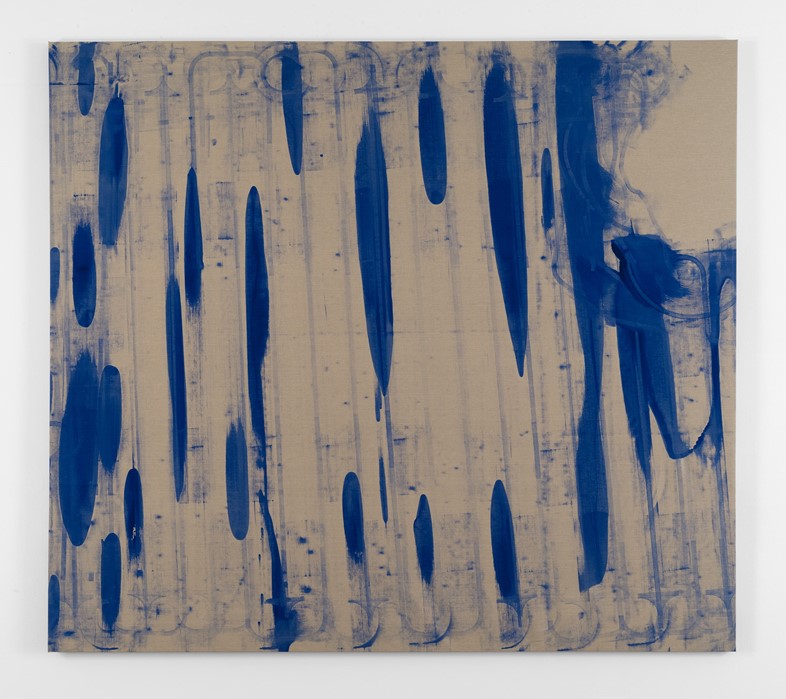
On incorporating robots in the painting process…
“I started using robots in 2007 when I began making mechanically assisted paintings. I was looking at contemporary forms of gestural expressionism and what contemporary tools could be. Even back in 2007, drone painting felt obvious. That’s when I started appropriating drones as tools to paint. I first started by programming drones as autonomous paintbrushes and then moved on to controlling the drones with my hand by actually holding them – a nod to traditional painting. The drone functioned as an extension of my hands. In a way, using drones or vacuums or even robot arms was a natural lineage for me. They are all methods of expression with multiple vectors of reference, from women’s roles to proxy wars.”
On referencing Yves Klein’s Anthropometries…
“Yves used women’s labour as a means for creation as much as entertainment for an audience and himself. Instead, I wanted to abandon the notion of women’s bodies as entertainment – whatever the circumstances. There is a unique experience in being a woman, a constant duality of being invisible while simultaneously trying to claim presence. Much of Klein’s series is presented with extensive documentation of the women nude, whereas in Alone Together, my absent body is a sort of ‘un-selfie’ only acknowledged in the negative space of the paintings. They serve as portraits, but also a mirror.”
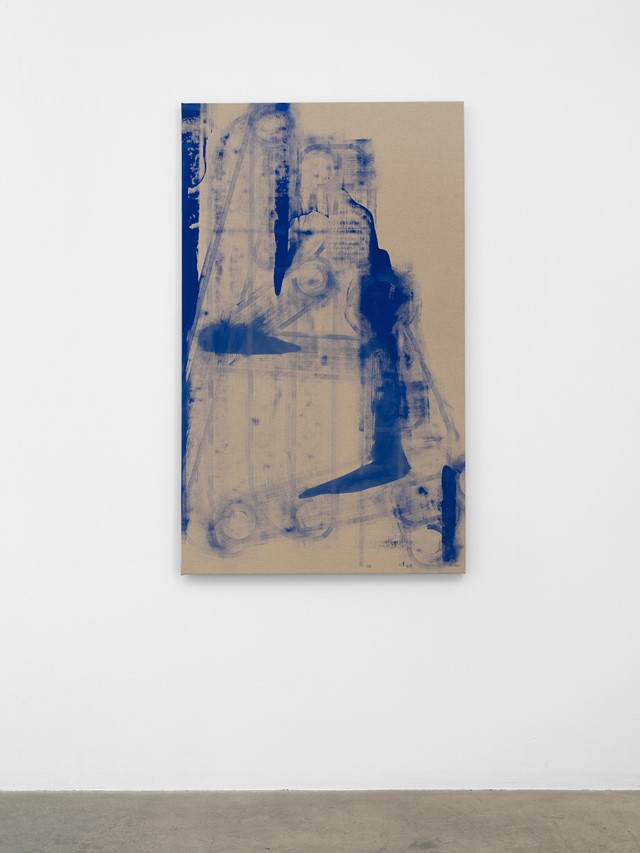
On her preoccupation with gendered labour, power structures, and technology…
“All of my work looks at how process is transparent, but the structure of functioning is a secret. Power is such propaganda for perceived success — we want to to be powerful, to have control of everything and curate ourselves online and off, without having our suffering be visible or real. It’s unfortunate because it translates to unhealthy standards for everyone who experiences us. I see power as a tool, while technology allows us to witness and experience the human condition unlike ever before, and to expose these power structures and inequalities. The uglier the world becomes, the more it reveals itself and the more I’m convinced that beauty as a manifestation of community is the only way to make any suffering worthwhile. There is some absurd beauty in art, where words fail but expression hasn’t.”

Addie Wagenknecht: Alone Together is at bitforms gallery, New York until February 11, 2018.
